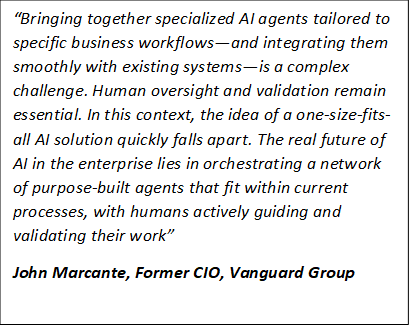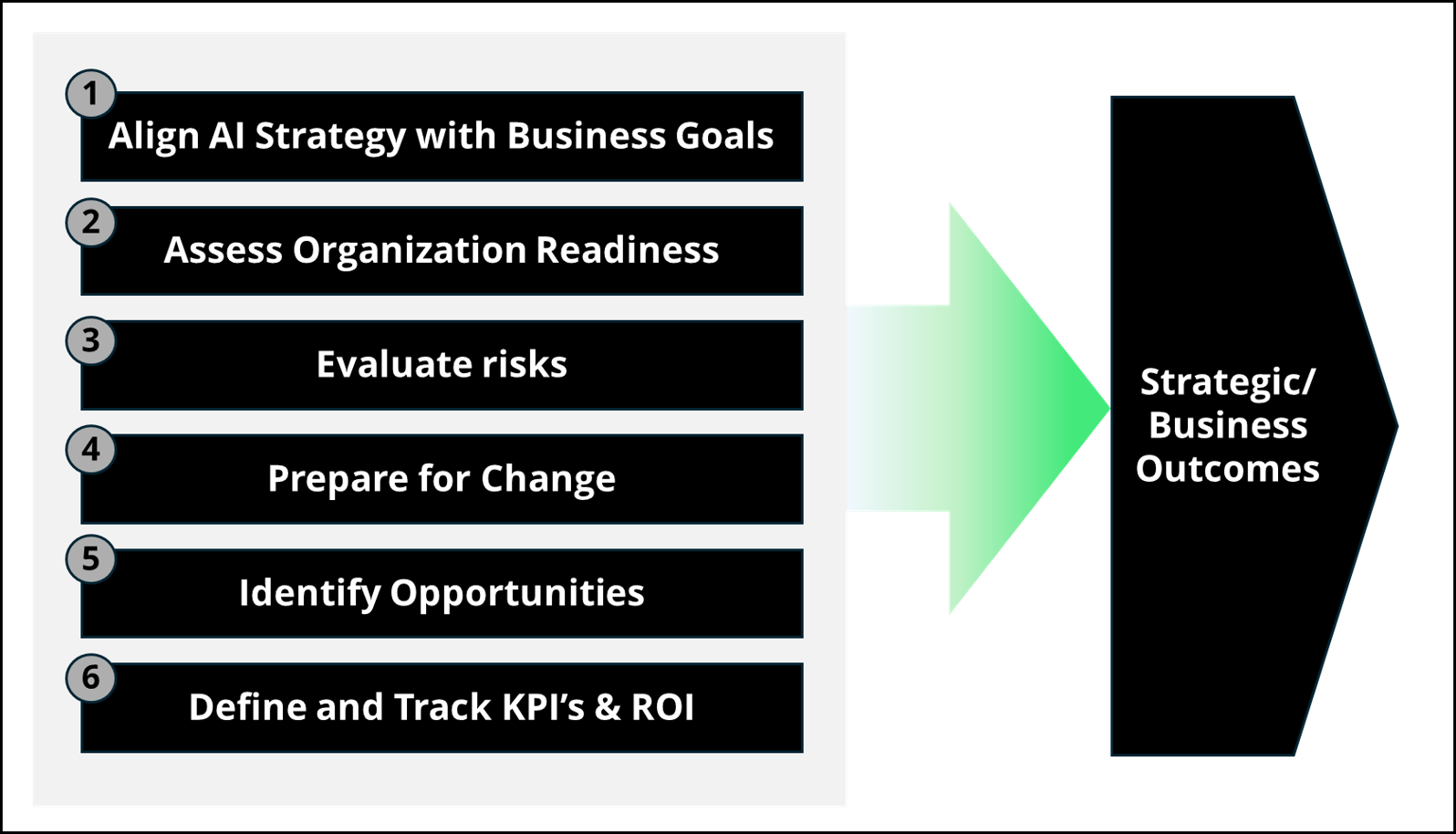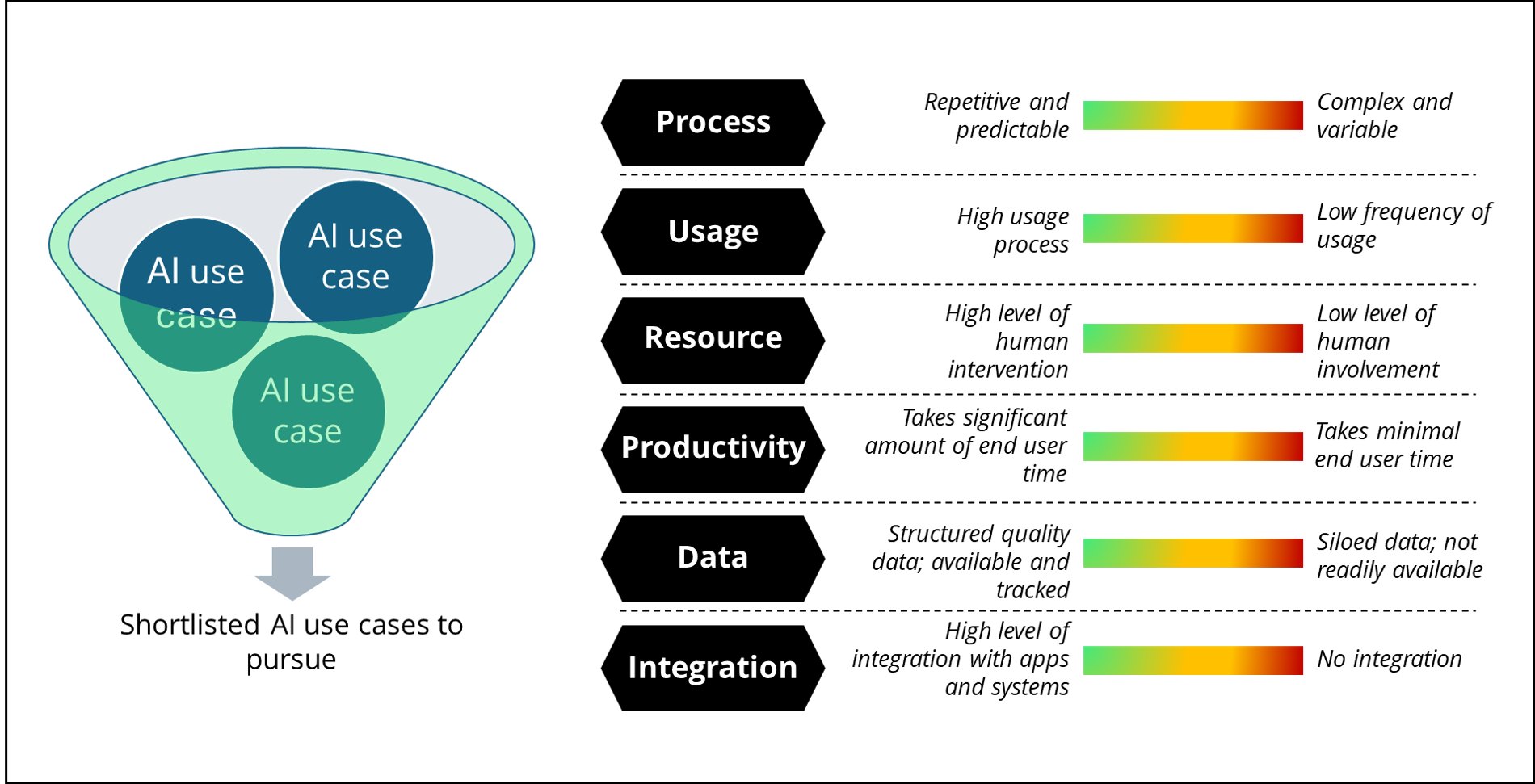
Rapid evolution of AI
The field of Artificial Intelligence (AI) has made tremendous advancements since its inception in the mid-20th century. Early research primarily focused on developing reason and rule-based systems, where machines followed pre-defined logic to solve problems. Significant progress in machine learning, especially deep learning, which uses large amounts of data to create models capable of learning from experience, propelled AI advancements in the 2000s.

Today, AI, specifically Generative AI (which excels at creating content and interactions) and Agentic AI (autonomous systems capable of making decisions and performing tasks), are experiencing a substantial hype cycle, driven by the rapid commercialization of AI technologies with applications across a wide range of industries. While AI is not new and has been around in various forms—such as robots in industrial settings and machine learning models in finance and insurance—the current hype cycle is encouraging organizations to reimagine possibilities and assess the impact on their business and operating models.
While Generative AI along with the rise of Agentic AI have demonstrated extraordinary potential, its swift ascent has sown considerable confusion and chaos within organizations. Amid the hype, many are in search of a “silver-bullet” solution—a singular AI platform that could magically resolve all organizational challenges. However, this notion is far from reality given the current maturity of AI. The reality of implementing all-encompassing agentic AI is far more complex, organizational processes and workflows are intricate and vary significantly, necessitating a more nuanced approach to AI implementation.
Establishing the foundation for AI
Organizations looking to implement AI should adopt a strategic approach that harmonizes innovation with a long-term vision. Successfully implementing autonomous agents to boost productivity and customer experience demands a balanced approach and careful planning as outlined below. Itis vital to evaluate specific areas and functions within the organization that are suitable for AI agents before embarking on the AI journey. Furthermore, aligning the AI strategy with the overall business goals and assessing organizational readiness are essential steps. AI presents various business risks, so understanding these risks and preparing employees and customers for the changes AI brings is crucial before introducing AI agents

1) Align AI Strategy with Business Goals
AI should not be deployed for its own sake. AI projects should address specific business objectives and align with the organization’s long-term vision and goals. Whether it’s improving productivity, enhancing employee and customer experience, or driving revenue, AI should directly contribute to the company’s strategic outcomes.
2) Assess Organizational Readiness
Organizations should evaluate their readiness in terms of people, processes, data, and infrastructure before starting their AI journey. Assessing the impact on roles and jobs, required skills, the availability of quality data for training or fine-tuning models, and the necessary infrastructure is crucial for designing, deploying, and maintaining AI systems.
3) Evaluate Risks
AI presents several risks, including ethical challenges, data privacy concerns, and a lack of transparency regarding the functioning of AI models. It is crucial to design, train, and utilize AI agents ethically. Organizations should establish clear data usage guidelines to ensure compliance with regulations and data privacy, manage fairness in decision-making, and mitigate biases.
4) Prepare for Change
As with any new technology, AI adoption can encounter resistance from employees concerned about its impact on their jobs and workflows. Organizations should establish realistic expectations and clearly communicate how AI will enhance existing roles rather than replace them. While Agentic AI has the potential to augment certain roles, the primary goal of early adoption should not focus solely on workforce reduction but rather on improving productivity and transitioning affected employees into more value-added initiatives. AI implementation could significantly impact business processes. Organizations should carefully manage these transitions and provide ongoing support to help affected teams adapt to the new environment. Ensuring AI agents integrate seamlessly into existing processes is crucial to reducing friction.
5) Identify Opportunities
Organizations should adopt a "base hit" approach by starting incrementally and scaling as their capability to identify and deploy AI matures. Beginning with pilot deployments and targeting opportunity areas that can quickly demonstrate ROI will enable organizations to test, learn, and scale AI adoptions effectively. This incremental approach builds confidence in technology and its applications. Organizations are also inundated with offerings from both established vendors and new entrants seeking to sell their "AI" solutions. While it may be enticing to deploy or pilot some of the solutions, one should carefully evaluate AI solutions and assess the fit with the overall AI strategy. While many of these tools are recent developments, it is crucial to thoroughly understand the underlying mechanisms, the data they are trained on, the cost dynamics, and the potential value they can deliver.
6) ROI and Impact
Any AI deployment should have clearly established outcome metrics to assess the success of the deployments and measure the ROI of those efforts. These specific AI metrics should align with and contribute to the overall enterprise metrics and should be tracked and communicated regularly.
Finally, organizations should evaluate the best approach to adopting AI. While larger enterprises may have the capital and resources to pursue AI initiatives internally, others should carefully consider the best strategy to integrate AI into their operations. Leveraging AI technology from third-party vendors or through partnerships can provide a faster and more cost-effective method of adoption. However, it is important to be cautious when evaluating vendors with AI capabilities, as many are still in the early stages and may overpromise on the value they can deliver.
Identifying Opportunity Areas for AI
Identifying opportunity areas for AI agents is one of the most critical steps in the successful adoption of AI. Once identified, the prime candidates should be evaluated based on the complexity of the process, frequency of usage, availability of data, number of resources involved in the process, impact on end user productivity and experience, and opportunity for integrations within workflows.

1) Process
Well-defined processes, such as support inquiries, which are repetitive, predictable, and require low to moderate levels of decision-making, are optimal for early AI adoption. These processes are easier to automate compared to complex processes, which are characterized by their variability and the need for a high degree of decision-making.
2) Usage
Target processes with high frequency of usage. These processes, which are utilized frequently and involve a significant volume of tasks, can benefit greatly from Agentic AI. By implementing AI, organizations can streamline these high-frequency processes, reduce the time and effort required from employees, and achieve faster and more consistent outcomes. Additionally, targeting high usage processes enables organizations to quickly demonstrate the return on investment (ROI) of AI initiatives.
3) Resources
Resource-intensive processes, characterized by their high demand for human involvement and significant time consumption, are prime candidates for AI. These processes often involve repetitive and predictable tasks that can be automated, thereby freeing up valuable human resources for more strategic and value-added activities. By leveraging AI, organizations can enhance productivity, reduce operational costs, and improve overall efficiency.
4) Productivity & Experience
Processes that hinder user productivity or experience should be prioritized for AI. These processes often take a significant amount of end user time, frustrating users and reducing overall efficiency. By implementing AI, organizations can streamline these processes, reduce the time and effort required from users, and enhance the overall user experience. AI can automate routine tasks, provide instant responses, and make data-driven decisions, thereby improving productivity and satisfaction for both employees and customers.
5) Data
Data serves as the foundation for AI; having readily available, structured and quality data is crucial for the successful deployment of AI, especially when organizations are developing AI capabilities internally. Although certain Generative AI applications are trained on extensive datasets, it may still be necessary to fine-tune the models with organizational data to better capture specific nuances and provide optimal results for end users.
6) Integration
Integrations within workflows are critical for AI deployment because they ensure that AI agents can seamlessly interact with existing processes and applications. This integration allows for automation of tasks, data sharing, and real-time decision-making, which enhances overall efficiency and productivity.
Conclusion and a call for action
Organizations are eager to develop a clear strategy for leveraging AI to achieve immediate ROI. However, a gap between executive expectations and the practical realities of AI implementation has led to confusion and a lack of coherent strategy around AI. Although many executives are familiar with Large Language Models (LLMs), there's a common misconception that these models are all-knowing and can be applied universally across various workflows. To truly benefit from AI, organizations must undertake significant groundwork to align AI initiatives with their specific needs, strategically implement AI in areas where it offers the most value, ensure seamless integration, and drive sustainable outcomes.
-------------------------------------------------------------------------------------------------------------------------------------
About AIIRIFY:
AIIRIFY is reimagining the IT helpdesk process by deploying AI agents to autonomously resolve user IT issues in less than 3 minutes, without the need for a live helpdesk. The current IT process to resolve end user issues has not changed in ages; it remains highly manual and inefficient. Employees spend more than 2 weeks annually dealing with IT issues, costing US companies $250 billion in lost productivity, while IT helpdesk organizations in the US spend more than $100 billion supporting end users.
AIIRIFY has conducted a thorough assessment of IT challenges and requests within organizations to develop a clear roadmap for deploying AI agents to address these issues. Our AI agent delivers a return on investment from day one, and we work closely with our partners to create a comprehensive multi-agent system that scales AI adoption efficiently.
To learn more about how AIIRIFY AI agent helps organizations achieve sustainable ROI by streamlining processes, reducing costs, enhancing employee productivity, and improving overall experience, please contact us @ info@aiirify.com or schedule a call @ https://bit.ly/4iAFMs7
